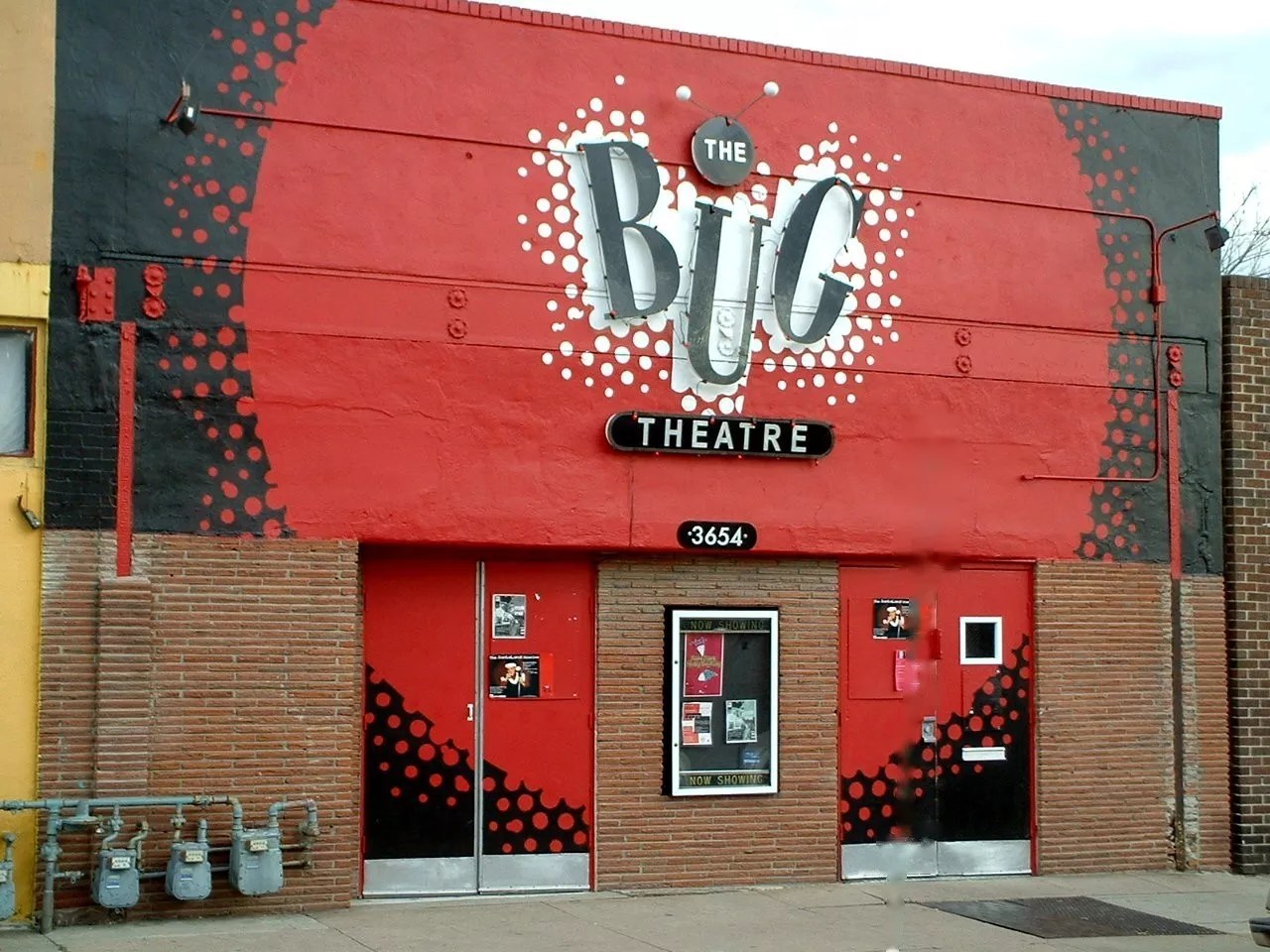
Courtesy of the Bug Theatre

Audio By Carbonatix
When you walk down Navajo Street today, it’s hard to imagine it was once the heart of Denver’s avant-garde art scene. On any given Friday night, you could wander among four bustling galleries, grab a bite at Patsy’s, an Italian family-owned restaurant that served the northwest Denver community for nearly a century, and eventually end up at the Bug Theatre for an experimental performance or film.
The 3600 block, between 36th and 37th avenues, was an incubator for artistic expression, where Pirate: a Contemporary Art Oasis, Next and Zip 37 hosted collaborative exhibitions that pushed the boundaries of Denver’s art world. But those days are long gone. Now the galleries have moved to places like Lakewood’s 40 West Arts District, and the old Italian neighborhood has given way to trendy coffee shops, Pilates studios, fine-dining restaurants and luxury apartments.
Yet amid the sweeping changes, the Bug Theatre, which offers a variety of regular programming as well as rentable event space, stands as one of the last vestiges of the once-thriving Navajo Street Art District. Inside, the theater still has its original charm: high ceilings, rows of theater seating that echo its past as a cinema, and a stage framed by two striking columns that invoke a classic, intimate feel. As the Bug celebrates its thirtieth anniversary this October, its resilience stands in stark contrast to the rapid gentrification around it, embodying the neighborhood’s creative spirit that refuses to fade.
“It’s unbelievable the Bug still exists,” says Alex Weimer, executive artistic director. “The people of this city and the surrounding areas have supported this place from the beginning, some of them fiercely, some occasionally. Both are absolutely fantastic. Anyone who comes through the doors is supporting the arts, and that’s so important.”
This year, make your gift count –
Invest in local news that matters.
Our work is funded by readers like you who make voluntary gifts because they value our work and want to see it continue. Make a contribution today to help us reach our $50,000 goal!
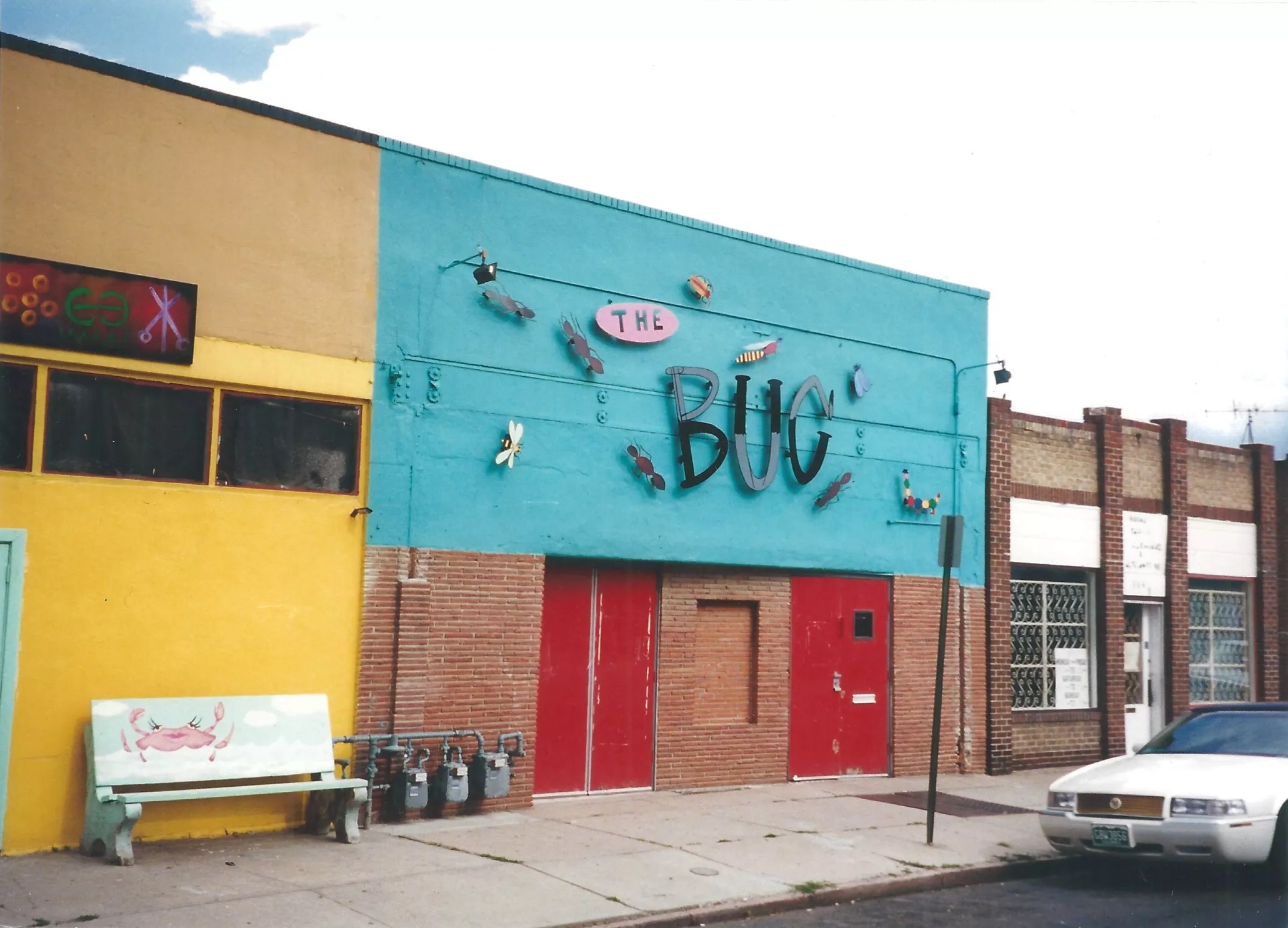
The original facade for the Bug, with metal workings created by artist Bill Gian.
Courtesy of the Bug Theatre
The venue, which opened in 1912 as a nickelodeon movie house called the Ideal Theatre, has a storied past. It changed names several times over the years, becoming the Avalon and then the Navajo Theatre in the 1940s. By the 1950s, it was known as the World Playhouse, a project supported by the influential Helen Bonfils, before being repurposed into an appliance storage warehouse in the 1960s. The neighborhood it served was predominantly Italian, but other ethnic groups, such as Russians and Jews, also lived there.
When married artist couple Chandler Romeo and Reed Weimer purchased the building in 1992, it had been abandoned for decades and was little more than an empty shell. Romeo recalls that they stumbled upon the building by chance.
“We first came in because the guy next door said he had some furniture we might be interested in,” Romeo says. “When we came in, there were no seats in it. The stage was tiny; it was back where the columns are today. It was an arched stage that had footlights. There were just a couple of bare lightbulbs. It was clean, but just really interesting-looking and bare. Still, we couldn’t believe what we had been living across the street from.”

The Bug Theatre as it looked in 1993 before renovations.
Courtesy of Reed Weimer
Before Romeo and Weimer bought the Bug, Navajo Street’s creative fabric was already being reshaped. In 1984, they purchased the building just across from the Bug – 3659 Navajo Street, which was already home to one gallery, Pirate – and helped usher in a wave of new spaces, including Next and Zip 37, which transformed the area into the Navajo Street Art District.
Navajo Street quickly became a hub for experimental art, and Weimer and Romeo’s dual roles as landlords and creatives helped to anchor the community. Despite their connection to art galleries, the couple admits that renovating the Bug was no small feat. What they initially thought would be a quick fix turned into a two-year labor of love.
“We thought, ‘We’ll get some seats in here and open the doors,’ but it was much more complicated than that,” Romeo says. The space had no plumbing, heating or seats to speak of. They scoured Denver for suitable seats, even coming across some from a defunct adult theater before finally sourcing seats from the Boulder Theater through Kevin Causey, who had purchased them for the theater he was opening on the second floor of the Boulder Museum of Contemporary Art and had extras.
“He told us he had a semi-truck full of theater seats from the Boulder Theater; he had used half of them and told us that if we took over the lease on the truck he was using to transport them, we could have the seats,” Weimer says. “Of course we said yes. They drove the truck down here and parked it on the side, and we spent days putting those in.”
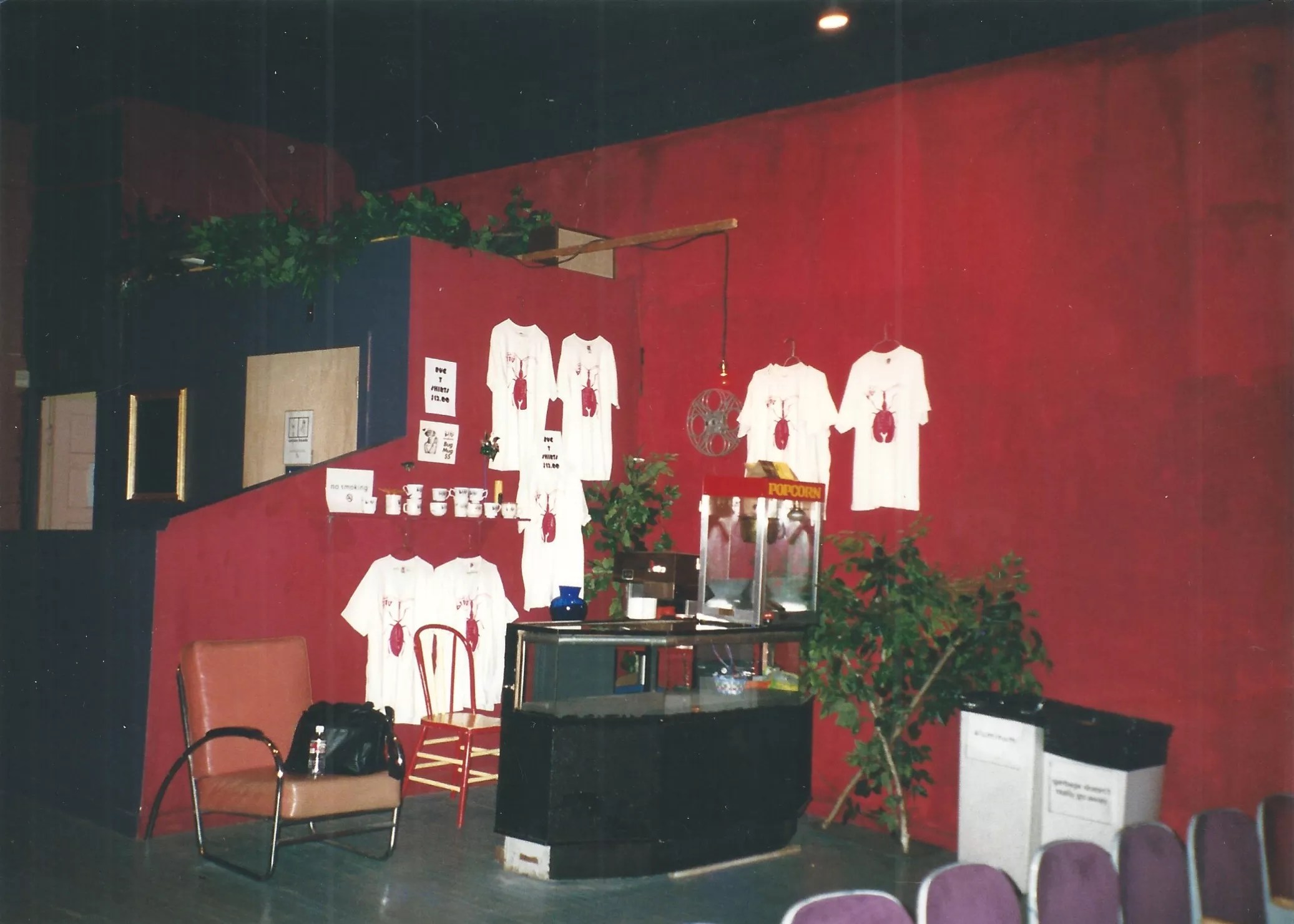
The interior of the Bug circa July 1999.
Courtesy of the Bug Theatre
Although they initially thought they could handle the redesign themselves, they ended up hiring Robert Schnautz, the founding principal of River Studio Architects, to assist. The Bug reopened in 1994 as a nonprofit arts venue, restoring not only the building, but the neighborhood’s cultural lifeblood.
Romeo and Weimer pitched the space to local artists as an experimental space for performer-driven content, but the venue struggled to fill its programming. As Weimer candidly puts it, “The Bug was not successful.” Fortunately, his brother, Alex, returned from drama school in Seattle in 1998.
“Since he had just graduated from theater school, we thought he could help us get the theater off the ground,” Reed says. “However, we’ve always said that he doesn’t have to stay here if he wants to go to the West or East Coast.” Although he was initially hesitant to step into a leadership role, Alex soon realized that the Bug had become his creative home.
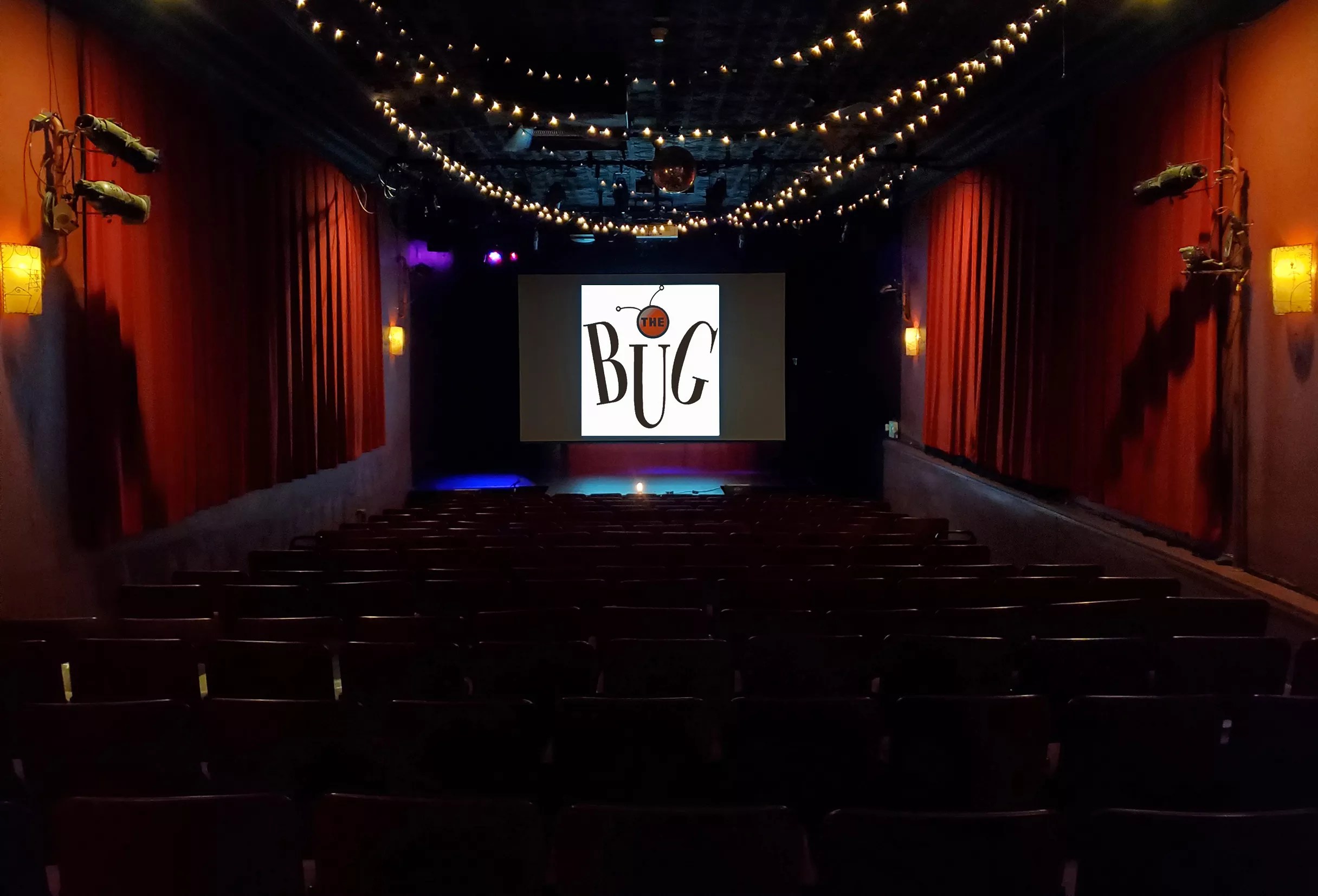
The Bug Theatre celebrates its thirtieth anniversary with a show: Saved by the Bug: A Celebration of 30 Years of The Bug Theatre on October 19.
Courtesy of Eileen Agosta
“Where else can I have my own theater where I can do whatever I want? This is great,” Alex says. “We started all these weird programs, and some of them are still going. It’s been a lot of fun.” Under Alex’s leadership, the Bug Theatre Company was born and continued to produce shows until the pandemic, which forced the venue to close for fifteen months.
When he reflects on the company’s early years, Alex says it was “a little bit contentious at the time” because “several people were angry that there was a little bit of nepotism going on. They weren’t wrong, but I’ve been here for over 25 years and always paid rent, so I feel fine about the way things went down. It was a little bumpy at first, and I feel bad that people’s feelings got hurt. But people’s feelings are always going to get hurt – it’s theater.”
The company’s first show, I Hate Hamlet, did not draw the large audiences it hoped for, but the experience laid the groundwork for the Bug to enter a new era and begin expanding its programming. Over the years, it has hosted everything from comedy to experimental theater to the Amazing Acro-Cats to indie film screenings and everything in between.
“Our aesthetic is, for lack of better words, stuff you won’t see anyplace else,” Alex says. “We want to do something weird, off-the-beaten-track kind of stuff.”
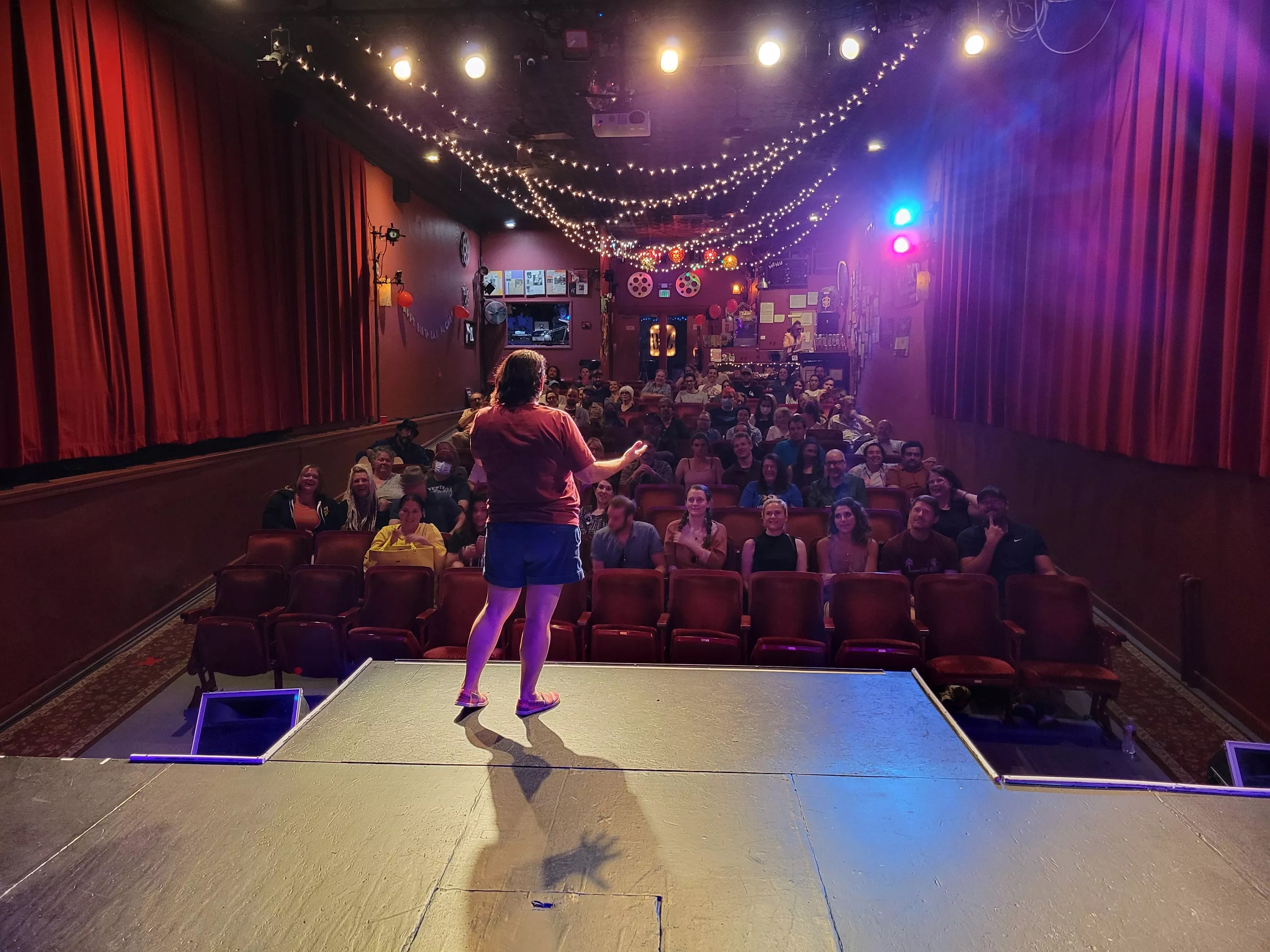
GerRee Hinshaw hosts the variety show Freak Train, the Bug Theatre’s longest-running show at 24 years.
Courtesy of Eileen Agosta
As the Bug celebrates its thirtieth anniversary, it’s throwing a special event: Saved by The Bug: A Celebration of 30 Years of The Bug Theatre on Saturday, October 19. The evening will include performances from some of the theater’s longest-running shows, such as comedy from the Grawlix, films from the Emerging Filmmakers Project and, of course, variety acts from Freak Train performers. The night will also include an online silent auction to help raise funds to support the organization’s longevity.
While other art institutions have moved to cheaper locations, the Bug has survived largely thanks to its landlords’ commitment to keeping art in the neighborhood. As for the theater’s future, Alex remains optimistic.
“We’re booked solid until next spring,” he says. “People still want to be a part of what we’re doing here. As long as the community keeps coming through the doors, we’ll keep doing what we do best: putting on weird, wonderful shows. I’m really looking forward to the show if I can get through it without crying, which I won’t be able to do because I can’t even get through this interview without crying. The mechanisms are in place, so I really hope that this place keeps going throughout the decades, even when I’m here haunting it.”
Saved by The Bug: A Celebration of 30 Years of The Bug Theatre, Saturday, October 19, Bug Theatre, 3654 Navajo Street. Learn more at bugtheatre.org.